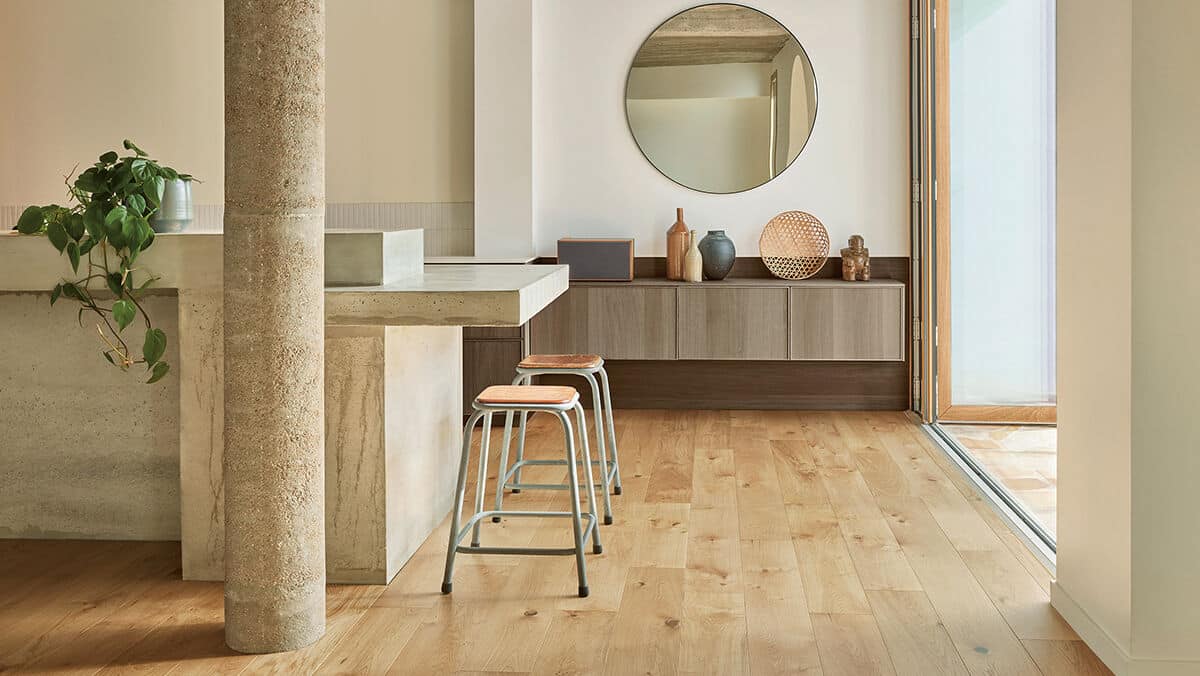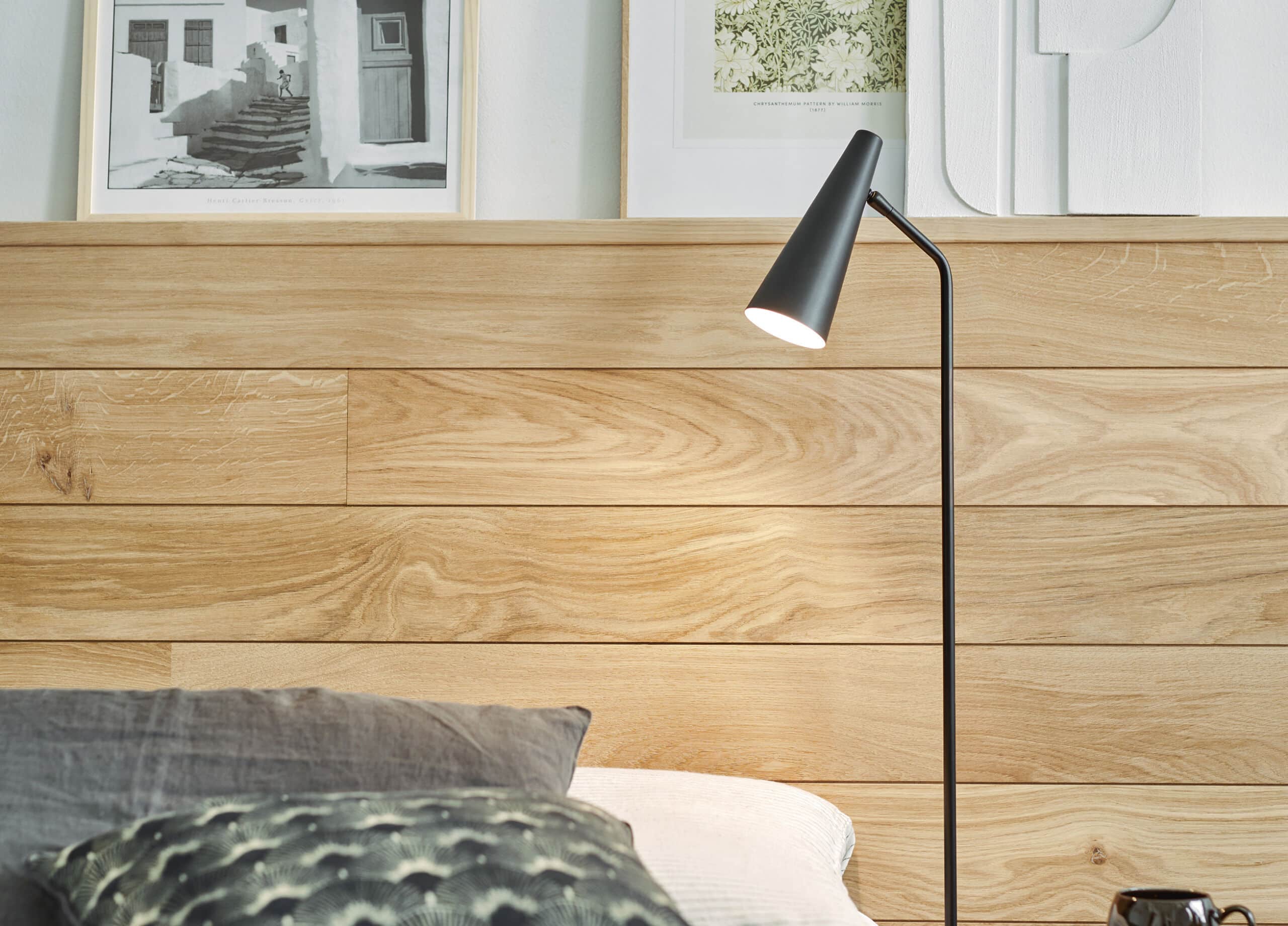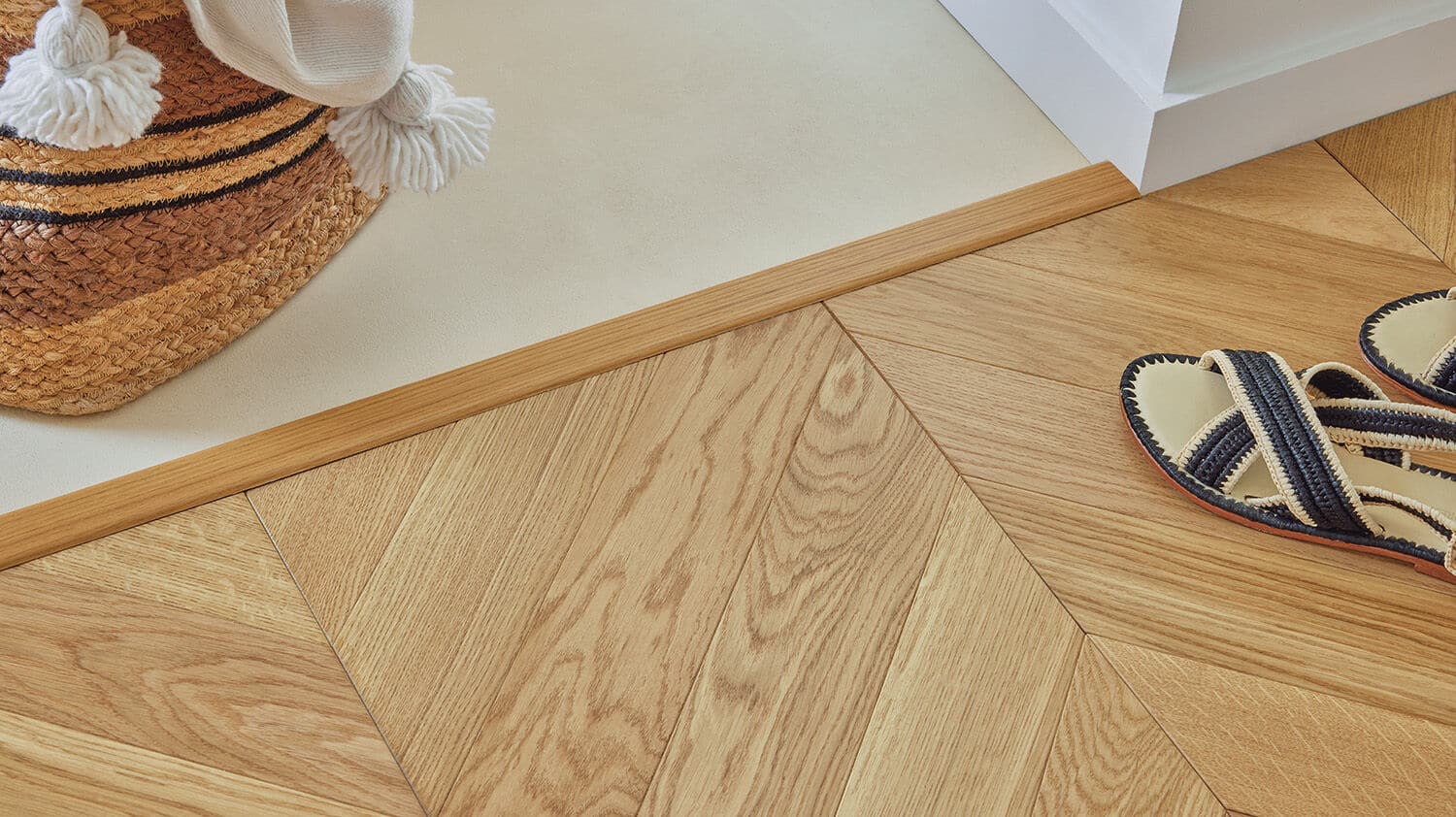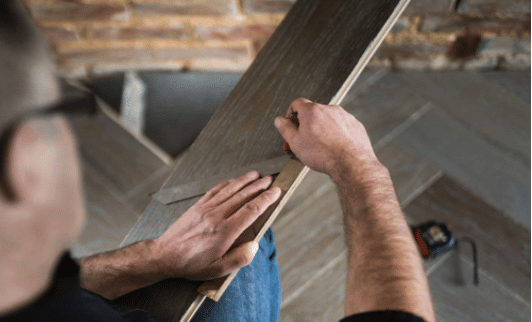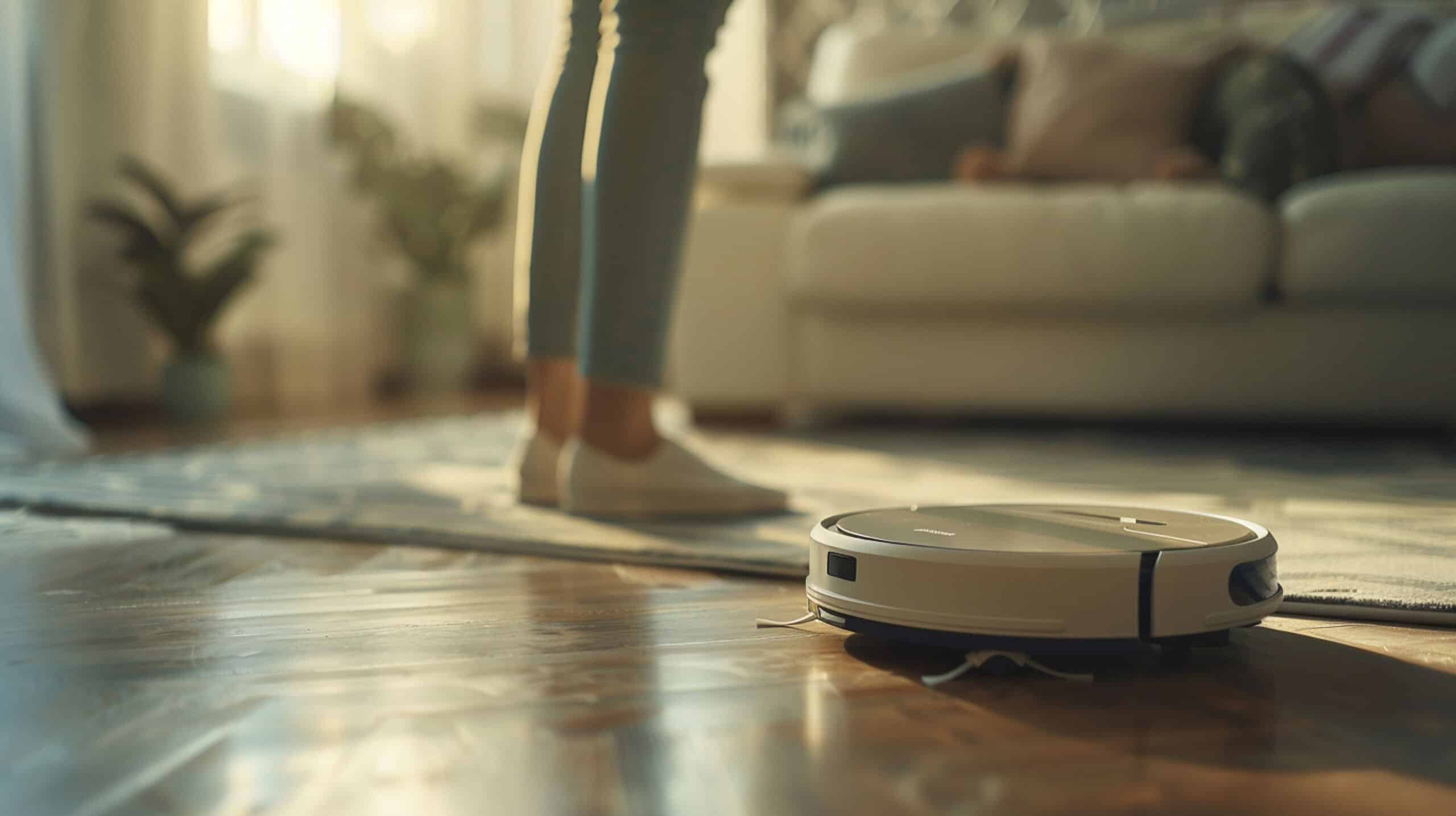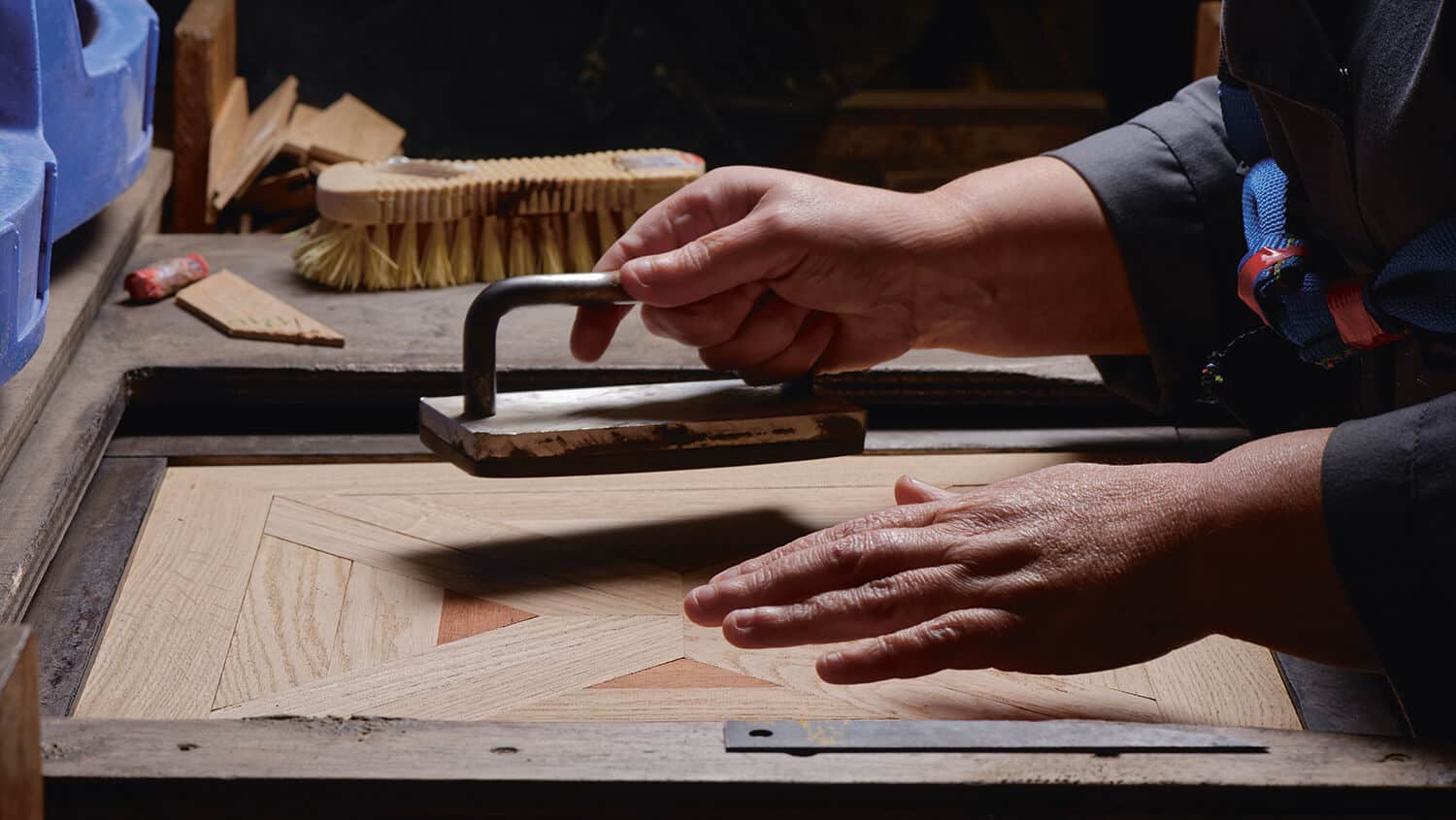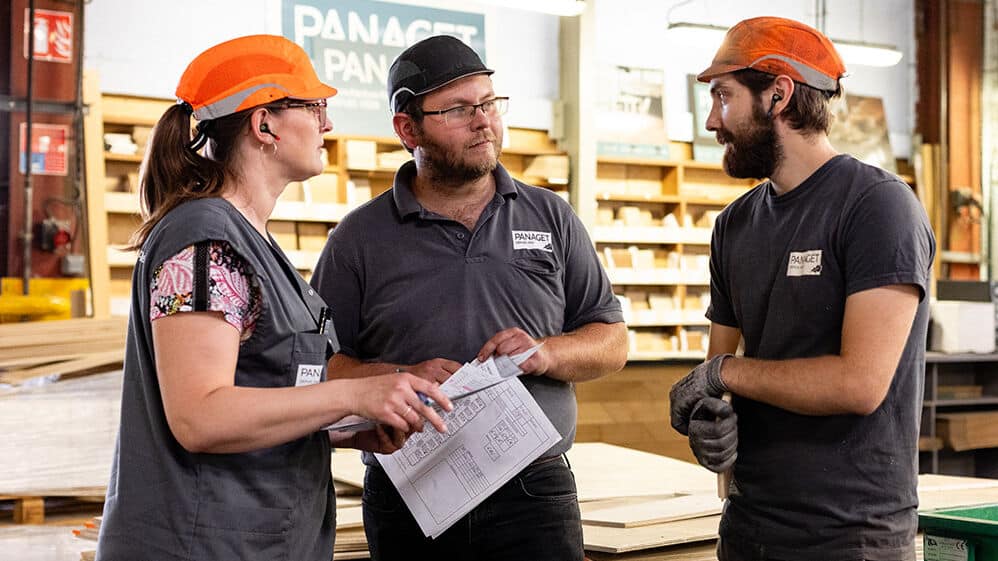Can wood flooring be laid over underfloor heating?
Yes. You need to take specific precautions:
Before you start fitting, check with your retailer or refer to the technical specifications sheets on our website to ensure that the flooring is compatible with your subfloor. We do not recommend using beech species in such situations, and the heat resistance of floor coverings and any intermediate layers (such as acoustic underlayers) should not exceed 0.13 W/m²K for underfloor heating and 0.09 W/m²K for reversible floors.
Subject to these conditions, the surface temperature of finished floors should not exceed 28°C.
The use of rugs or low pieces of furniture should be avoided as they may severely impact the system’s performance and risk damaging the wood floor.
1. Installation on low-temperature heated floors 
Hydronic radiant floor heating:
You should comply with all provisions of DTU 65.14, “Installation of hot-water heated floors”. This type of system allows the floor to be floated with a suitable underlay. For full glue-down installation, an MS Polymer adhesive (such as Presto PM) has to be used.
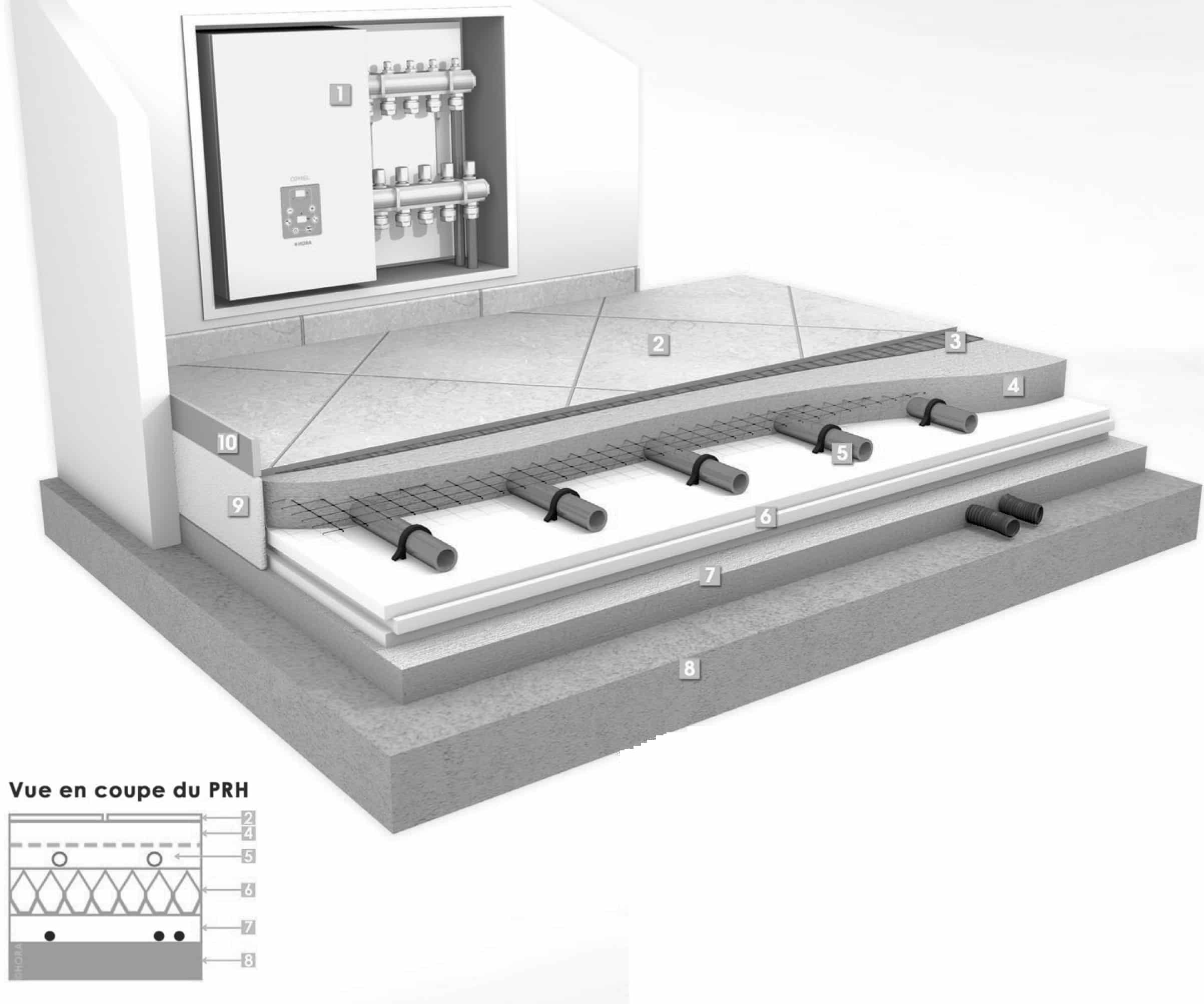
Main installation requirements:
- The thickness of the covering layer on top of the heating system needs to be at least 5cm.
- The water temperature should not exceed 40°C (104°F)
- The heat output should not exceed 95 W/m².
- The system needs to be carefully regulated, particularly when it is switched on for the first time, but also throughout its working life, to ensure this temperature is not exceeded.
Starting up the system:
- The subfloor will already have dried naturally, but the room also needs to be preheated for at least three weeks before the flooring is installed, regardless of the time of year.
- Turn off the heating 48 hours before installing the wooden floor.
- Then switch it back on no sooner than a week after you have finished installation, increasing it by 5°C (41°F) per day until it reaches the right temperature.
Electric radiant floor heating:
Heated floors with electric cables buried in concrete need to comply with NF C 32-330, and be installed in accordance with NF P 52-302 (formerly DTU 65-7).
Electric radiant systems consisting of a heating cable covered with a screed or slab need to comply with CPT Electric Radiant Floor Heating (CSTB 3606).
The system also enables the floor to be floated with a suitable underlayer. For fully glue-down installation, an MS Polymer adhesive (such as Presto PM) has to be used.
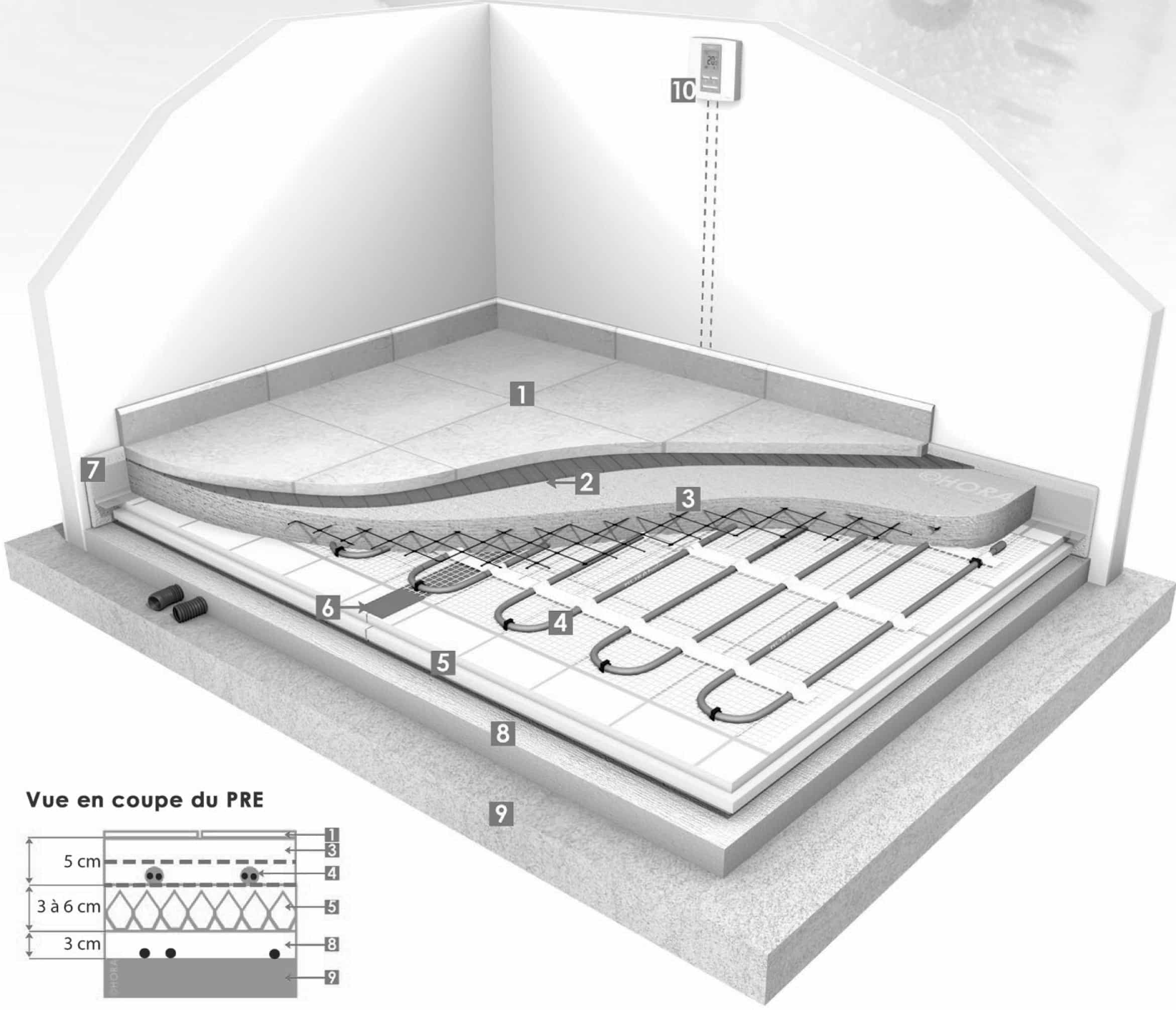
Main installation requirements:
- The covering layer above the heating elements should be at least 5cm thick.
- The heat output should not exceed 95 W/m².
- The temperature needs to be carefully regulated, particularly when the system is switched on for the first time, but also throughout its working life, to ensure that it does not rise too quickly.
Starting up the system:
- Electric radiant systems need to be started for the first time by an electric heating engineer.
- The subfloor will already have dried naturally, but the room also needs to be preheated for at least three weeks before the flooring is installed, regardless of the time of year.
- Turn off the heating for 48 hours before installing the floor.
- Then switch it back no sooner than a week after you have finished installation, increasing it by 5°C (41°F) per day until it reaches the right temperature.
2. Installing on a reversible (heating/cooling) floor 
You MUST glue the full surface to the underfloor using an MS polymer adhesive (e.g. Presto PM) without any underlay (see www.panaget.com). When installing our wooden floor on a cooling system, you should comply with DTU 65.14, “Installation of hot-water heated floors” and CPT “Low-temperature water-heated floors” (CSTB 3164).
Main installation requirements:
- The system needs to ensure that heat is evenly distributed across the surface.
- Fluid temperatures need to be controlled by automatic probes to prevent underfloor condensation from forming.
- The circuit needs to limit the fluid output temperature to between 18°C (64°F) and 22°C (71°F) according to the geographical area. The system installer should comply with this requirement.
- Heat emissions should not exceed 95 W/m².
- In summer, individual room thermostats should not be set below 22°C (71°F). The cooling system will not switch on until the ambient temperature is above or equal to 25°C (77°F).
Starting up the system:
- The subfloor will already have dried naturally, but the room also needs to be preheated for at least three weeks before the flooring is installed, regardless of the time of year.
- Turn off the heating for 48 hours before installing the floor.
- Then switch it back on no sooner than a week after you have finished the installation, increasing it by 5°C (41°F) per day until it reaches the right temperature.

